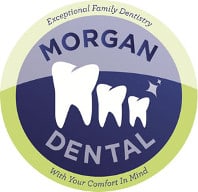What are common reasons for a dental extraction?
- Dental extraction (tooth pulling) is performed when a tooth is too damaged to save due to fracture or cavity or when the long term prognosis of a tooth is poor even with extensive dental treatment.
- Teeth are also extracted due to infection which is a frequent reason in the case of wisdom teeth (third molars).
- Teeth are removed in conjunction with orthodontic treatment or because there is not enough room in the mouth for the tooth to function properly.
- Lastly, a tooth is extracted because a gum infection has caused the tooth to be loose or the bone around the tooth has been dissolved by the gum infection which is spreading to adjacent teeth.
What should I expect during my dental extraction appointment?
The area around your tooth will be numbed using local anesthetic. Once the tooth is numb and you are comfortable, the tooth will be removed using instruments specific to the area of the mouth where the tooth is located. Most patients report feeling pressure in the area during extraction. Once the tooth is out, you will be asked to bite on gauze until the tooth extraction site has stopped bleeding and a clot begins to form. You will be given post-operative instructions prior to your appointment dismissal.
Can I be sedated for my extraction appointment?
Dr. Morgan performs both nitrous oxide (laughing gas) and enteral conscious sedation which can help ease patient anxiety. Please ask about these options when you schedule your extraction appointment.
Will I be in pain after my tooth extraction appointment?
Following dental surgery, it is normal to experience some discomfort which should gradually subside in the days following your appointment. If medication has been prescribed, take as instructed to help with pain. To avoid prolonged pain, keep your fingers and tongue away from socket. Do NOT use drinking straws, drink carbonated beverages, spit, or smoke for 48 hours following surgery. These actions are proven to cause a condition called dry socket. If swelling or stiffness occur, place cold towels or an ice bag to your face for the first 6-8 hours. Apply for 15 minutes, then remove for 15 minutes.
Are there any restrictions to diet or oral care following my dental extraction?
A liquid or soft diet is advisable during the first 24 hours. Keep hydrated by drinking fluids such as water and Gatorade. Do not drink beverages with carbonation. On the morning following surgery, rinse mouth with warm salt water (1/4 tsp salt to a glass of warm water). Repeat this several times daily. Do NOT use mouth rinse (Listerine, Scope, etc.) for 5 days following extraction(s). If you were prescribed an antiseptic mouth rinse called chlorhexidine gluconate following your extraction, use it according to directions for at least 5 days after your appointment.
Why should I replace my missing tooth?
With tooth loss, a five-fold decrease in function occurs and the stomach must work harder to digest food leading to ulcers and other digestive problems. While this doesn’t apply to wisdom teeth or teeth removed for orthodontic treatment, most extractions of permanent adult teeth will affect overall function in your mouth. When a tooth is removed, the bone that surrounded it begins to deteriorate. As this bone disappears, nearby teeth will lose their support. This could cause pain, loose teeth, lack of retention for bridges and dentures, sharp and painful ridges, loose gum tissue and sore spots.
When should I replace my missing tooth?
The best time to replace a lost tooth is soon after removal when the bone healing response begins. An open space in the mouth will not be open for long. The teeth around your missing tooth will tip into the space. If there is a tooth above or below your missing tooth it will rise or fall into the empty space.
What options are available for tooth replacement?
One option for tooth replacement is a dental implant. An implant is a titanium root that is placed in the area that your lost tooth once occupied. Just as your teeth can receive dental crowns, a crown can be made and cemented on this titanium root. This restoration mimics your tooth’s natural shape and color and appears to emerge from the gums as a natural tooth. With today’s technology often a dental implant can be placed the same day as tooth removal saving your time and money as well as ensuring an excellent outcome for implant placement.
Another option for tooth replacement is a dental bridge. A dental bridge (also known as a bridge) is 3 or more connected crowns that use the teeth adjacent to a missing tooth space as anchors. The anchor teeth will receive crowns and a substructure connects them to a pontic (fake tooth) that resembles other teeth in the arch.
For patients with multiple missing teeth, both dentures (partial or full arch) and implant supported dentures can restore chewing function. Implant supported dentures use titanium “roots” that are integrated into the jaw to give increased retention and more reliable chewing function. Implants also aid in the prevention of your jaw bone from “wearing away.” There are 4 kinds of implant supported dentures: locator supported dentures, metal bar supported dentures, implant bridges, and screw retained dentures. A traditional denture (also known as false teeth) is a restoration constructed to replace missing teeth that is supported by surrounding soft (gums) and hard tissues (jaw bone) in your mouth. This type of denture is removable by the patient. It should be noted that when a tooth is removed and as we age, the bone that surrounded it begins to deteriorate. As this bone disappears, traditional dentures, as they rely on your bone and gums, will lose their support and often become ill-fitting or loose. Patient satisfaction with traditional dentures is often low for this reason.
